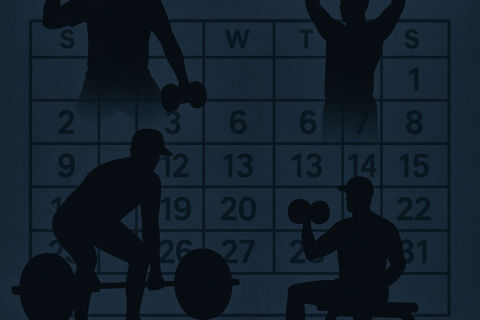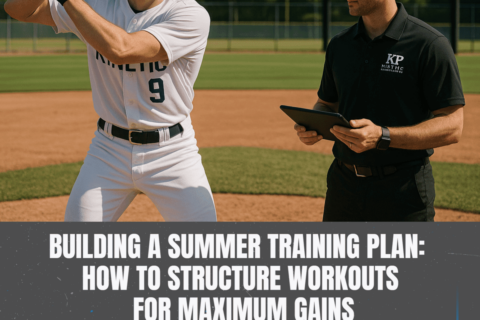Why We Need to Move Past Teaching Mechanics and Fundamentals
A common thought in coaching, particularly at the younger ages, is that we must teach proper fundamentals to young players and they need to master these skills in order to be successful ballplayers as they get older. While this concept is rooted in tradition and common thought processing, it actually is not backed up by much, if any, scientific evidence. Reputable research on skill acquisition and motor learning has been around for decades, but it has not permeated into coaching at the younger ages of baseball and softball. With some baseline education on the topic we can help ensure athletes are not corrupted by incorrect information (or interpretation of information) and are able to find their own movement patterns based on the principals of self-organization and proper skill acquisition.
In general, there is not a proper set of certain “fundamentals” or “mechanics” that are ideal for an organism (the athlete) to complete a task (perform a skill). Rather, an athlete will most effectively learn how to complete a task by individually moving through an environment that lets him/her find his/her own solution. This kind of learning is even more effective, and the best coaches do this, when that environment is constrained and allows the athlete to perform a task with a specific goal in mind and that goal leads to the desired movement pattern(s). How do we know this to be true? Objectively, there is a mountain of evidence displayed through studies on motor learning and skill acquisition. Subjectively, we can just watch baseball players on TV and see that there is definitely not a set of movement patterns or “fundamentals” that are uniform across the board for the best players in the world. Some examples…
– We teach infielders to have a short arm action and throw over the top so their ball goes straight (watch an MLB game, note how many infielders throw side arm)
We teach hitters that they need to swing down on the ball to create backspin (we can measure this… that’s not how it works)
– We teach pitchers to find a balance point and throw over the top to decrease stress on their arm by not leading with their elbow (balance points don’t exist and we don’t catapult a baseball with a straight arm)
– We teach outfielders to catch with 2-hands (I’m still waiting for a good explanation on this one)
– And then list goes on and on. The best players in the world do not have the best fundamentals and mechanics, they have the best individual movement patterns that allow them to accomplish their tasks the most efficiently.
So what is so wrong by trying to teach a young player proper mechanics or fundamentals? First, this instruction is usually performed verbally by a coach to a player. The coach has an intuition on what is the best way to execute the movement, but that verbal instruction received by the player is now corrupted because he will (usually) interpret it differently and in his own unique way, and then try to perform the task to make the coach happy, not to allow his own body to learn the skill and do what is most efficient for him. Our general intuition on where behaviors come from are usually pretty poor, and then we lose most of that limited knowledge in translation to the athlete. If we want to teach lasting learning to an athlete, we need to setup an environment that allows them to accomplish a goal through the task that we create in the practice landscape. A couple of simple, straight-forward examples…
– A hitter swings down on the ball, producing too many groundballs and lack of power production. Instead of giving him a verbal cue to dip his back shoulder more or swing up on the ball, we create an environment to guide him to that movement pattern. We could make him aim at higher external targets, we can put a short bat in his hand so he naturally has to dip his back shoulder more, or we can throw him loopy/high front toss so he has to get more on plane to make solid contact
– A pitching Rapsodo picks up that a pitcher has low spin efficiency, likely meaning he is cutting the ball by getting around the outside of it with his hand. Instead of telling the pitcher to stay behind or below the ball, we create an environment to let him discover that movement pattern on his own, which we know will allow him to learn the movement pattern better. We can give him a Clean Fuego to create backspin, we can give him a target outside of his throwing hand to force him to throw through, not around, the ball, or let him play with his arm slot or hand position on his own, teaching him how to use the Rapsodo to monitor which position recruits the highest spin efficiency.
As humans, and most in this context being above average natural athletes, we have an abundance of motor skills and coordination to rely on. Some are correct, while others are wrong, but we do have the ability to figure most of it it on our own. Every proper “mechanic” and “fundamental” is contextual and each individual will react to that context differently. If we teach a player a “fundamental” or “mechanic” in a controlled environment verbally prescribed by a coach, it will have little, if any, transfer to a very uncontrolled and random environment, like a game.
Verbal instruction can, and probably should, have a place in all coaching if it’s used as a constraint to guide the athlete towards a task or shift his attention and focus. But the science of a constraints led approach is strong and has been around for decades, we just need to get on board with it and have the courage to change our ways and use it in a developmental environment.


